Visit Castel Sant’Angelo in Rome?
The history of Castel Sant’Angelo (St Angelo Castle ) substantially coincides with that of Rome and it is impossible to separate these two entities so deeply incorporated, the changes, the revolts, the miseries and the glories of the ancient city seem to be reflected punctually in the massive size that there are almost two thousand years is mirrored in the waters of the Tiber. A little far from St. Peter’s Basilica, at the end of Sant’Angelo Bridge, on the right bank of the Tiber, it stands Castel Sant’Angelo. Lets go to visit Castel Sant’Angelo in Rome? Here at Your Travel to Italy with Ana Patricia you make the trip of your dreams!!! ALSO: see our “Accommodation in Italy – Tips for your holidays!”
Whatch this video about Castel Sant’Angelo in Rome
(Source: BBC Studios)
Introduction
The Mausoleum was born as a beloved sepulchrer of the emperor Hadrian in a peripheral area of ancient Rome and absolves its original function until 403 B.C., when it was included in the Aurelian walls by orders of the western emperor Honorius. From this moment on, a “second life” begins in the vestments of the castle, a stronghold beyond the Tiber to protect the city. Numerous Roman families vie for its possession, the city will be the stronghold of Senator Teofilatto, of the Crescencios family, of the Pierleoni and of the Orsini. It is only an Orsini Pope – Niccolò III – that will carry out the Passetto di Borgo, which links the Vatican to the castle, in an ideal and physical continuity. Read also Visit the Vatican Museum next to the Castle! and What are the main tourist monuments in Rome?
1) Visit Castel Sant’Angelo (Castle of the Holy Angel) in Rome? A LITTLE ABOUT THE CASTLE
In 1367, the keys to the building were given to Pope Urban V, to request the advance of the curia in Rome since the exile to Avignon. From that moment onwards, Castel Sant’Angelo inseparably links its destinations to those of the Pontiff, who adapt it to the residence in which to take refuge in moments of danger. Thanks to its solid and fortified structure and its reputation for intangibility, the castle is home to the Vatican Archives and Treasury, but has also been adapted for court and prison. Also read What to visit near Rome? The best roundtrips from Rome.
Its Facilities
With the change of function, the appearance and the installation are remodelled through a very long series of interventions that are released over the course of four centuries. New structures are added to the pre-existing ones, changing them, modifying their function, since cancelling them in a process of uninterrupted transformation that seems to slide one another without a solution of continuity. The long and varied history of the building, with its thousand metamorphoses, seems to be based on the complicated plot of subterranean spaces, environments, galleries, stairs and patios that make up the current arrangement of the castle, creating a faceted and complex organism, the role of symbolic and of historical stratifications.
2) Visit Castel Sant’Angelo (Castle of the Holy Angel) in Rome?NATIONAL MUSEUM HEADQUARTERS
Since 1925 it has been the headquarters of the National Museum, Castel Sant’Angelo houses collections of art and history as well as relics of the Italian army in a monumental frame restored by the occasion.
The complex and stratified history of the monument, which can be brought back, therefore, to the three main nuclei constituted by the Roman remains of the imperial mausoleum, the fortified castle and the pope’s apartments, constitutes time, substance and frame the exponent resource that boasts heterogeneous collections of sculptures, paintings , marble discoveries, weapons, furniture and objects of different origins, partly recovered in the excavation of the helical ramp of the mausoleum, partly provided by the Roman National Museum of the Diocletian Spa, and partly acquired on the antiquarian market.
Passetto di Borgo
In some periods of the year it is possible to visit the famous Passetto di Borgo, an elevated and fortified passage that connects the Vatican with Castel Sant’Angelo, passing over the walls of the Vatican. This passage, which led from the castle directly to the Vatican Palace, allowed the head of the church, in case of need, to take refuge inside the castle, and at the same time to have a fort that would allow better control of the Rione. The strategic importance of the Passetto emerged, for the most part, in the darkest and most painful periods for Rome and for the Church itself. In fact, Alexander VI Borgia made use of it, when, in 1494, he travelled to find refuge in the Castle during the invasion of Rome by the French militias of Charles VIII.
3) Visit Castel Sant’Angelo (Castle of the Holy Angel) in Rome? LEVELS AND VISIT ROUTE
The Museum – Levels and routes of visit: The modifications granted in time to the building, due to the different uses that were made in it in the centuries, today define three architectural typologies gathered in a single monument, easily perceptible and distinguishable on seven levels.
Levels 1, 2 and 3
At levels 1, 2 and 3, the mausoleum develops, from which access to the monument takes place through the Dromos (path), the courtyard and the helical ramp, up to the urns room. This journey has been restarted at the highest level of historical loyalty. At level 3 of the Hadrian structure, under what is now the “Cortile dell’Angelo” (Courtyard of the Angel), grain and oil deposits were systematized, probably in the medieval age.
Beneath the other courtyard, that of Alexander VI or the reservoir, there are the so-called “historical prisons”, created by Alexander VI Borgia, through which Benvenuto Cellini fled. The fortified castle, repeatedly fortified between the 14th and 17th centuries and finally restored with strong manumission and successive partial restarts in the first half of the 20th century, constitutes the fortification of the second level.
Levels 4 and 5
At level 4 there are the Cortile dell’Angelo (Courtyard of Angel), the courtyard and chapel of Leo X, the courtyard with the reservoir and the adjoining rooms of Alexander VI and the heater of Clement VII.
At level 5 you will find the most splendid and best preserved Renaissance environments, the private apartments of Paolo III Farnese, with the gallery that keeps to the north towards Flaminia Street and the magnificent rooms painted by Perin del Vaga.
For twenty years, the dominant position of this level has been already occupied by the gallery of Giulio II, with a view of the bridge and the city; the two short walks between the galleries, the one covered by Pius IV Medici and the one discovered by Alexander VII Chigi.
Level 6
Level 6 is also organized and decorated in the reestructuring required by Pope Farnese. At this level is placed the library, the treasure room with this cabinets and safes (by some it is considered the cell of the tomb of the emperor Hadrian) the room of the Festoni, that called of Adrianeo and finally, Cagliostra, of superior environment origin of the lodge Farnese, after the imprisonment for respected detainees was applied (the name derives exactly from the prison of Cagliostro of 1789 – 91).
Level 7
At level 7, there are rooms used since the 17th century to hold archives that were no longer enough in the rooms below the “round room”, the uppermost part of the Hadrian artillery tower. From the round room you can access the Terrace of the Angel, from where you can see all of Rome.
Still on the Castle
From a funerary monument to a fortified outpost, from a dark and terrible prison to a splendid Renaissance house that is active within its Michelangelo walls, from a resurgence prison to a museum, Castel Sant’Angelo incarnates in the solemn Roman spaces, in the powerful walls, in the magnificent rooms painted, the event of the Eternal City where past and present appear inseparably legacies.
Castel Sant’Angelo has, immediately, numerous transformations and interventions, imposing itself in the capitoline cultural reality as an active pole, in a degree to catalyze the interest of the millions of visitors that each year populate their spaces to visit the fascinating rooms, admire its precious collections of paintings and manufactures, enjoy the numerous exhibitions and temporary samples that follow inside the castle during the year.
Useful information
Stay with the useful information now and plan your trip to Italy well!
Where is the Castle?
Castel Sant’Angelo – accessible to the public of Lungotevere – appears on the right bank of the Tiber, a few hundred meters from St Peter’s Basilica and Via della Conciliazione (Reconciliation Street). Situated in the heart of an area of the capital particularly rich in historical and artistic evidence of exceptional relief, but also home to numerous crafts and exercises, the castle is located close to the Palace of Justice and Cavour Square – a few minutes walk from the characteristic Borgo Pio and from Risorgimento Square and Via Cola di Rienzo.
- Address: National Museum of Castelo Santo – Located at Ângelo Lungotevere Castello, 50-00.193 ROME.
- Opening hours: Tuesday / Sunday 9: 00-19: 30.
How to get there?
Metropolitan line A: Lepanto stop; Ottaviano-San Pietro stop (8 minutes walk). Also read How to use the metro in Rome?
Bus
- Lines 62, 23, 271, 982, 280 (Piazza Pia stop).
- Line 40 (ending at Piazza Pia).
- Line 34 (stop for di Porta Castello).
- Lines 49, 87, 926, 990 (ending at Piazza Cavour – stop for Crescenzio).
- Lines 64, 46 (Santo Spirito stop).
Fee
- Complete € 10.50. The ticket price is subject to change during exhibitions.
- Reduction of € 7.50 for European Union citizens between 18 and 25 years old, and teachers of public schools. The reduced ticket price is subject to change during exhibitions.
Are you going to stay in Rome? So you can get our exclusive hotel tips!
Here you will find great and free tips to not get fooled when choosing your hotel in Italy.
Plus: read our tips and advices about the Rome neighborhoods and where to stay! Here you will find the perfect hotel for you and for your needs, respecting you budget! Also: booking at booking.com, you will help us to keep our blog and for free! No fees, no click baits, no fake news!
Hotel I suggest near the Historic Center
If you are passionate about art and would like to stay in the center where you can move around walking, as well as having countless possibilities for places to have lunch / dinner or a snack, I advise you to stay in the historic center. Regions near the Trevi Fountain, the Coliseum, the Roman Forum, the Imperial Forum and the Villa Borghese, Piazza Spagna and Piazza Navona can be considered as “historic center”. These are the most expensive areas, but you will be close to everything, literally!
If you want to save a great option is the B&B, click on the links below and get to know each one. If you like the suggestion make your reservation and guarantee good prices.
If you prefer a good hotel, I have three options that I really like, click on the links below and get to know each one. If you like the suggestion make your reservation and guarantee good prices;)
Hotels that I suggest near the San Giovanni Region
For those who want to find cheaper alternatives in quiet areas, but at the same time close to the means of transport to the center, I suggest the region of San Giovanni or Monti (near the metro stations San Giovanni, Castro Pretorio and Circus Massimo) – which it is a more residential neighborhood; therefore, more economical and quiet! And with just 15 minutes by subway you will be in the center too!
I have two options for Hotels that I recommend, click on the links below and get to know each one. If you like the suggestion make your reservation and guarantee good prices;)
I have two options of B&B that I recommend, click on the links below and get to know each one. If you like the suggestion make your reservation and guarantee good prices;)
Hotels I suggest near Vatican City
An interesting area to stay and a little cheaper than the historic center is the Vatican area (Vatican Museums) which is very well connected with everything.
I have two options of B&B that I recommend, click on the links below and get to know each one. If you like the suggestion make your reservation and guarantee good prices;)
If you prefer a hotel, I have three options that I recommend, click on the links below and get to know each one. If you like the suggestion make your reservation and guarantee good prices;)
Hotel I suggest near Termini Station
For those who prefer to stay in neighborhoods that have good access to the rest of the city and at a better price, then you should choose accommodation in the surroundings of Termini Station (from where a dense network of public means of transport starts, serving both: the local people and tourists).
I have 3 good hotel suggestions in Termini, click on the links below and get to know each one. If you like the suggestion make your reservation and guarantee good prices;)
If you prefer B&B I have 2 good suggestions, click on the links below and get to know each one. If you like the suggestion make your reservation and guarantee good prices;)
Hotels that I suggest in Trastevere
For those who prefer to “taste” authentic and characteristic Rome, there is nothing better than booking a hotel in Trastevere (on the outskirts of the city’s historic river), full of typical Roman history and traditions, known for the tortuous streets of sampietrini stones and the centers medieval style housing.
The neighborhood is in the historic center and to the right of the Tevere River, in the midst of a spectacular landscape, where each visitor can observe the countless churches and squares (such as Santa Maria in Trastevere). In addition, this neighborhood offers several local restaurants and canteens for those who want to try typical Roman cuisine.
If you want to save a great option is the B&B, click on the links below and get to know each one. If you like the suggestion make your reservation and guarantee good prices;)
If you prefer a good hotel, I have two options that I really like, click on the links below and get to know each one. If you like the suggestion make your reservation and guarantee good prices;)
Conclusion
Visit Castel Sant’Angelo in Rome? Castel Sant’Angelo is an unusual destination in the historical-artistic panorama of the capital. While all the monuments of the Roman era are devastated, reduced to ruin or quarries of materials useless to be recycled in new, modern buildings, the castle, through an uninterrupted series of development and transformations that seem to slide into one another without a solution of continuity , they have been following Rome’s destinies and history for almost two thousand years.
And if you feel insecure, have no time, and need help to organize your trip, don’t hesitate to contact me! I will love to help you make your dream trip to Italy come true. And how can I do that? Keep reading this post until the end and you will understand how we make your life and your trip much easier
Did my post help you? If so, be sure to post your comment below, but if you still have questions just send me a message I will answer you as soon as possible!
An Extra Help for your Trip
The best content from Your Travel to Italy!
Learn more about our tours in Italy right now!
- What to visit in Italy in 10 days?
- The ten must-see places in Tuscany?
- The best tips to save on your trip to Italy?
- What are the 10 most visited cities in southern Italy?
- Airports in Italy? How to get to your hotel? (Venice, Milan, Rome, Florence)
- What to do in 1/2/3/4 days in the main Italian cities?
- The best tips on food in Italy (wines, typical food, enogastronomy tours)
- How to get from Fiumicino Airport to Rome downtown?
- Your Travel to Italy: 10 tips for traveling through Italy!
Best regards from Italy

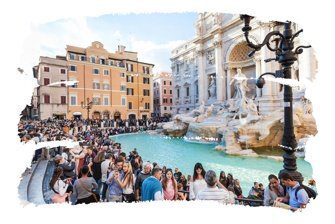
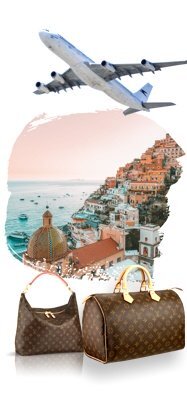
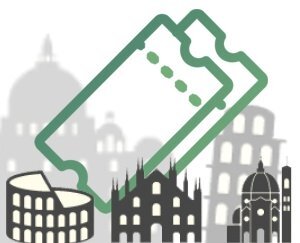
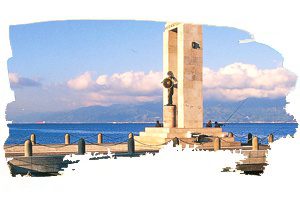
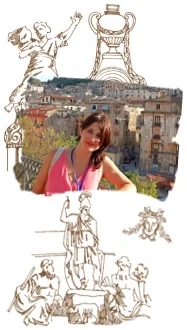


 Save money!
Save money!